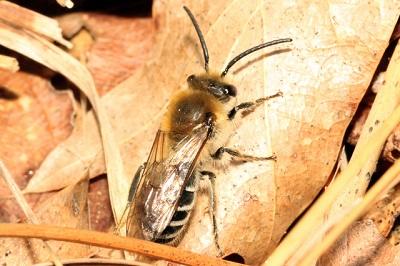
Colletes thoracicus. Photo by Hadel Go
Cellophane Bee (Colletes thoracicus)
-
An important pollinator of plants and not aggressive/defensive
-
Host plant families include Apiaceae (carrots), Rosaceae (stone fruits), among others
-
Underground cells are lined with clear “cellophane-like” material that the female bees produce to line the cells containing eggs/larvae and to make the cells waterproof
-
Is a solitary ground nesting bee – likes sandy soils
-
Has a very short life span – a month or so in the spring in the Northeast
-
Females emerge in the spring and go out collecting pollen and nectar to provision their nest in the ground. Females will lay an egg on or near a mix of pollen and nectar and the developing bee will emerge the following spring
-
If you can tolerate them, you may want to consider leaving them. Adult females will die off in a short time given their short life spans. A new generation will simply live as pupae underground for another 9-10 months until they emerge as adults.
By University of Maryland graduate student Lindsay M. Barranco, June 2018
